How to Make a Subway Map with John Tauranac
Hear from an author and map designer who has been creating maps of the NYC subway, officially and unofficially, for over forty years!



Essex Street Market is one of New York City’s most historic public markets. Opened in 1940 as part of a larger effort by Mayor Fiorello La Guardia to get pushcarts off the streets, the market has been a staple of the Lower East Side for over 75 years. All of the market’s 28 stalls are owned by small, independent businessmen and women, meaning that you can satisfy your craving for everything from fresh fruits and vegetables, to a vast array of prepared food – including handmade spanakopita and Japanese okonomiyaki – to specialty items like raw milk cheese and imported prosciutto.
Here are ten fun facts about the Essex Street Market. Also make sure to join us for our upcoming food tour inside this historic space:
Essex Street Market Food & History Tour
Throughout the late 1800s and early 1900s, millions of immigrants flooded New York City’s Lower East Side. Seeking work, many turned to pushcart peddling which became the neighborhood’s second-most popular profession (after the garment industry).
The very first open-air pushcart market was formed in 1886 by 4 peddlers who clustered together on Hester Street, just blocks away from the future Essex Street Market. As the famous documentary photographer Jacob Riis (author of How The Other Half Lives) noted, peddlers sold “peaches at a cent a quart,” “damaged eggs for a song,” and “hats for a quarter.”

60% of all pushcart peddlers were concentrated below 14th Street and east of Broadway, with over 6,000 independent vendors peddling their wares. Over on Orchard Street, just two blocks away from Essex Street Market, the largest market of its time existed with 800-plus peddlers. Vendors paid $1 per week to sell everything from fresh fruit and vegetables, pots and pans, nuts and cheese, and much more. If you lived in this neighborhood, you bought nearly all your household items from pushcarts.

During the Great Depression, New York City experienced an unprecedented increase in pushcart peddling, as no other work was available and people were desperate to make ends meet. Many could not even afford the small permit fees, and so operated unlicensed pushcarts. In an effort to clear the streets of congestion, Mayor LaGuardia vowed to build a network of indoor public markets with affordable stalls for vendors. Between 1934-1941, Mayor LaGuardia closed over 40 pushcart markets citywide.
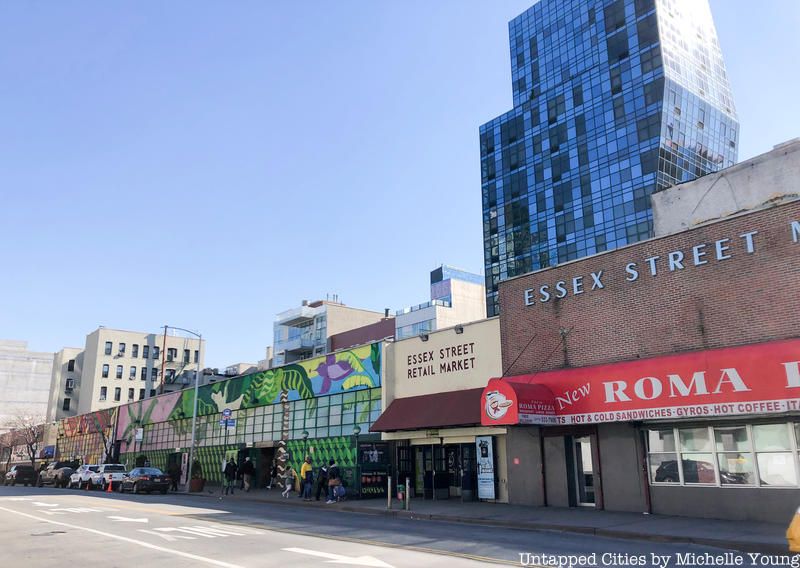
Essex Street Market opened in 1940 and was the city’s fourth public market to be completed, and originally housed 475 stalls. The land was cleared in the previous decade to make way for the new IND subway, now known as the F train. Vendors commended the market’s modern-day lighting, heating, and protection from the weather.
By 1955, 10 public market existed in New York City, completing the market network envisioned by Mayor LaGuardia. Today Essex Street Market is just 1 of the 4 remaining public markets in New York City (the others being La Marqueta, Moore Street Market, and Arthur Avenue Market.

Photo by Christina Han Photography
More than just a food market, Essex Street Market has always served as a community center where shoppers could learn how to shop on a budget. During the food shortages of World War II, Essex Street Market provided classes on how to stretch rations and save money by canning or substituting inexpensive ingredients. As over 70% of vendors were of Jewish descent, Essex Street Market also offered weekly Kosher cooking classes for over 20 years.
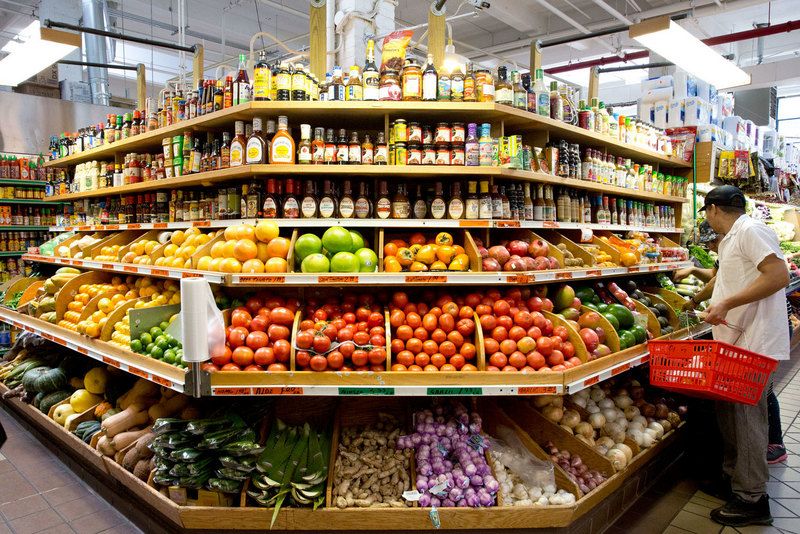
Photo by Nina LoSchiavo/Lower East Side Partnership
Facing competition from rising supermarkets in the 1950s and ‘60s, all public markets in New York City experienced a decline in business and many were forced to close. The New York City Economic Development Corporation, which is recognized for its work on city projects like the Brooklyn Army Terminal and NYC Ferry Service, completed a $1.5 million renovation in 1995 and consolidated all vendors into one building at 120 Essex Street, where the market is located today. Vendors welcomed an updated facility, though the original signage on the building’s exterior remains preserved and visible to all who pass the Delancey/Essex Street corner.
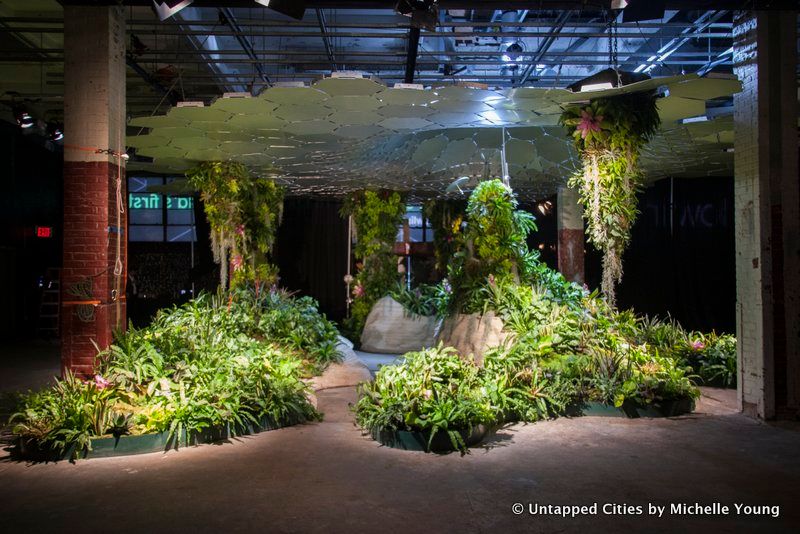
When thousands of people visited the Lowline Lab between 2015-2017, they might not have realized that they were standing in an old market building. Lowline’s team utilized this vacant space at 140 Essex Street, which used to be part of Essex Street Market, to showcase their solar technology.
In utilizing this space, Lowline was able to study plant life as it would exist in the future Lowline, proposed to be built in an abandoned trolley terminal below Essex Street Market.
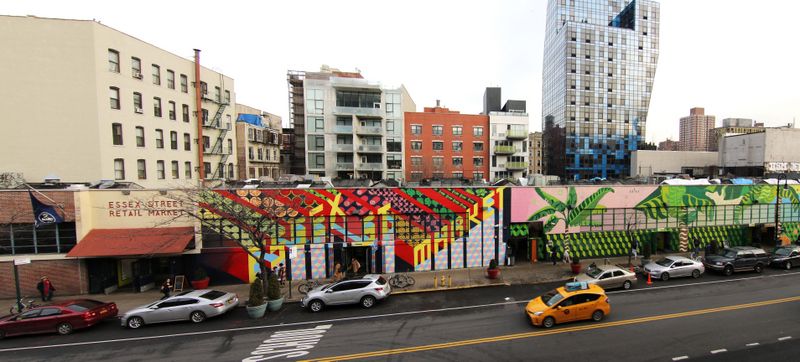
Photo courtesy Essex Street Market
Drawing from the market’s history, artist Gera Lozano painted the entire length of the Essex Street Market over the course of several days, transforming the brick exterior into a multicolored canvas of fruits and vegetables. Lozano says of her goal, “Merging both old and new worlds into a fresh palette that vibrates with the richness of its past and popular reputation today.”
She also painted five murals inside the market, including geometric representations of bread, cheese, and the market’s other food offerings (like the iconic pineapple). Her work at 120 Essex Street is the longest continuous mural in lower Manhattan.

Photo courtesy Nina LoSchiavo/Lower East Side Partnership
New York City’s Economic Development Corporation, which now manages the market, is always on the lookout for mom-and-pop shops and new business owners to join the vendor community. When there’s a good fit, the city subsidizes their rent and provides other services to help support their business. Osaka Grub and Arancini Bros., which both found success on the street food circuit (think Broadway Bites and Hester Street Fair), opened their first brick-and-mortar locations at Essex Street Market.
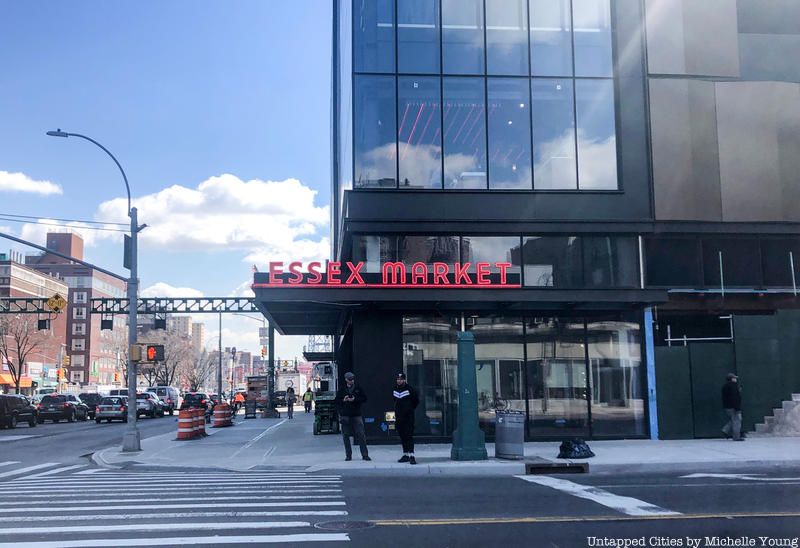 Handel Architects is behind the design for the new building in Essex Crossing where the Essex Street Market will move to
Handel Architects is behind the design for the new building in Essex Crossing where the Essex Street Market will move to
After nearly 80 years in the current location, Essex Street Market will move to a brand-new space on the ground floor of Essex Crossing on the southeast corner of Delancey and Essex Streets in the spring of 2019. Though in a new building, it will continue to be a public market, and all vendors will make the move. Plus, an additional 25,000 square feet will allow the market community to bring on 11 new vendors and 2 sit-down restaurants.
The new Essex Street Market will also boast a full-service demonstration kitchen and light-filled mezzanine space for events, making it one of the largest public markets in the country. Until then, Essex Street Market continues to be open for business at 120 Essex Street.
To learn more about the history and evolution of the Essex Street Market, join us for an upcoming tour:
Essex Street Market Food & History Tour
Next, check out 8 great food finds in the Essex Street Market and learn about Shopsin’s, which has an 900-item menu inside the market.
Subscribe to our newsletter